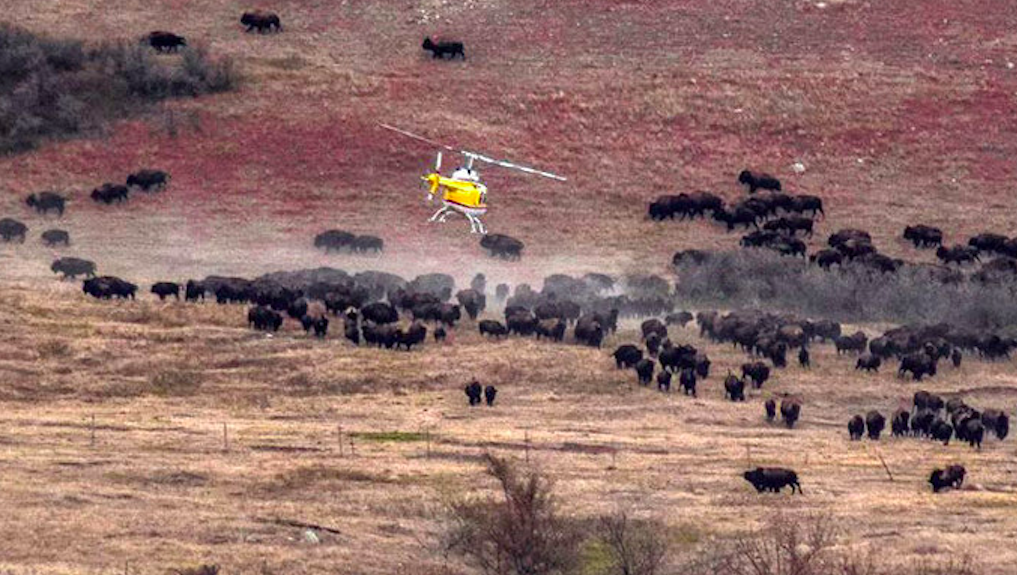“If we’re going to be heroes, if we’re really going to be those veterans that this country praises, well, then we need to do the things that we actually said we’re going to do when we took the oath to defend the Constitution from enemies foreign and domestic.”
***
North Dakota is a state not traditionally featured in the national news. More often than not, it sits below the Canadian border in between Minnesota and Montana, and remains placid and comfortable in its natural beauty. Lately, however, it’s been the site of a fiery and extremely public fight: those trying to save sacred land formerly held by the Standing Rock Sioux — a Native American tribe — and those behind the Army Corps of Engineers’ original plan, which is to go ahead with the path of the Dakota Access Pipeline across the Missouri River thus transporting oil from state to state while simultaneously destroying burial grounds and running construction beneath the reservation’s drinking water source, Lake Oahe.
The pipeline itself is designed to move oil more than a thousand miles from the Bakken fields in the northwest region of North Dakota all the way to Patoka, Illinois. Its major backer and advocate is a company called Dakota Access LLC., run by a big energy firm based out of Dallas, Texas — Energy Transfer Partners.
Aside from the members of the Standing Rock Sioux, thousands of other Americans from all over the country have banded together and migrated to the desolate state to protest the company’s plans.
Some of them are military veterans.
Two of the vets leading the way — former U.S. Army officer Wes Clark Jr. and old Marine and retired Baltimore cop Michael A. Wood, Jr. — were profiled recently in a piece written by Adam Linehan for Task & Purpose.
Clark Jr., the son of a famous four-star general, said he first got involved in the cause after being introduced to a Sioux tribal elder, named Phyllis Young. Together, they made the first attempt to devise a legal defense that would attempt to curtail what was looming for the reservation and their blessed land.
“I pulled all of the levers, and none of them worked,” Clark, 47, recalls.
It was then that he conceived what he’s heading up today: a team of veterans, to battle. Peacefully.
“We’re not going out there to get in a fight with anyone. They can feel free to beat us up, but we’re 100% nonviolent.”
Thus far, the overall protest has seen dozens of injuries and over 500 arrests.
More from the Task & Purpose story:
Vets Standing For Standing Rock was announced via an official sounding letter formatted like a five-paragraph military operation order, breaking down the “opposing forces” — “Morton County Sheriff’s office combined with multiple state police agencies and private security contractors” — “Mission,” “Execution” and “Logistics,” among other things. A packing list virtually mirrors the ones issued to soldiers preparing to deploy to the field (minus the weapons). But there are also parts of the document that read like a revolutionary manifesto. Under the section titled “Friendly Forces,” for example, the op order states, “we are there to put our bodies on the line, no matter the physical cost, in complete nonviolence to provide a clear representation to all Americans of where evil resides.”
The document was accompanied by a link to a GoFundMe campaign that has raised nearly $20,000 of its $100,000 goal since it was created on Nov. 11. The money, Clark Jr. says, will only be used for helping volunteers with transportation costs and then bailing those who are arrested out of jail.
Wood Jr. says the op-order was Clark Jr.’s idea, but the two men agree that organizing like a military unit is the smartest approach, especially because most of the people expected to join them on the ground have served.
Here’s the duo’s plan, in a nutshell.
First, get 500 to join into their cause, physically showing up to the site in North Dakota on the aforementioned date. Then, the day after, get together with the tribe for a “traditional healing” ceremony while wearing their old military uniforms. Shrewdly, the group will be donning their former garb to make any potential physical altercation with authorities seem that much more glaring in the eyes of the media and the country. Bagpipes and Sioux songs will serve as the soundtrack before they assemble and form a massive single line, arm in arm, then wade/walk across the river, towards their opposers.
“We’ll have those people who will recognize that they’re not willing to take a bullet, and those who recognize that they are. It’s okay if some of them step back, but Wes and I have no intention of doing so.”
Energy Transfer Partners and its contractors are still aiming to complete the project by January of 2017.




































